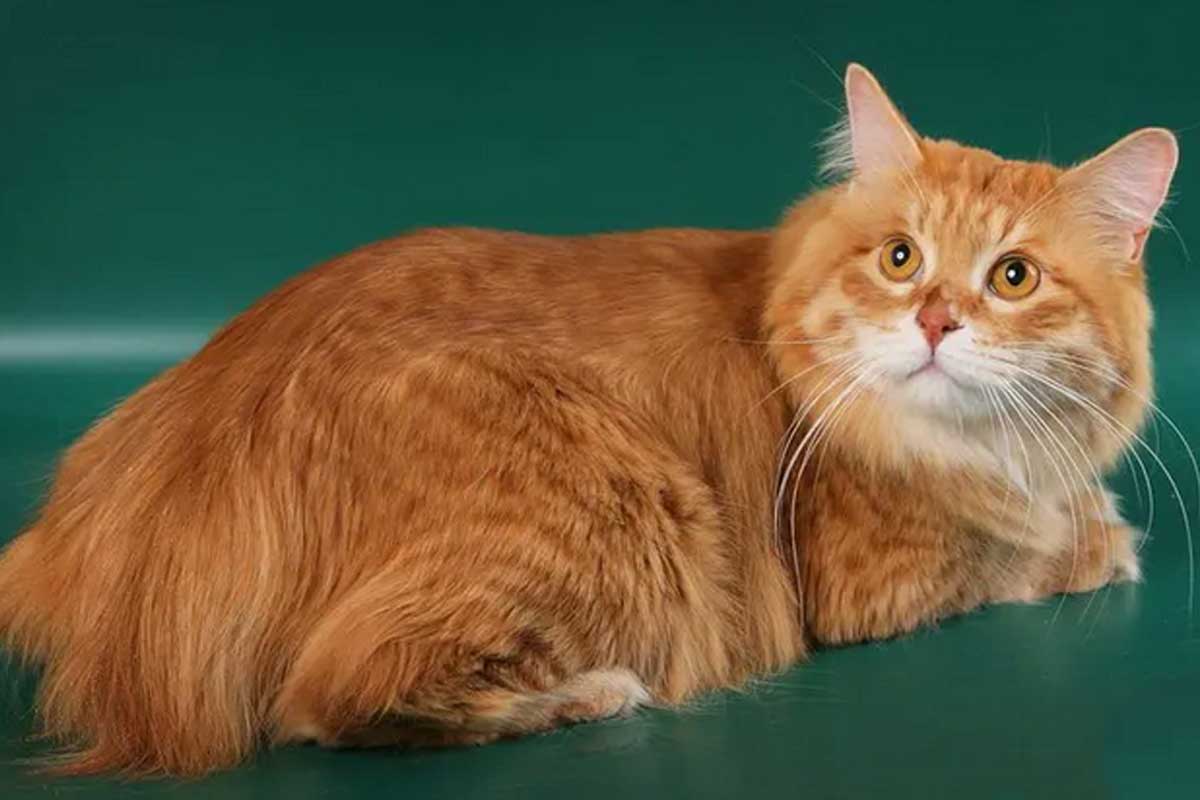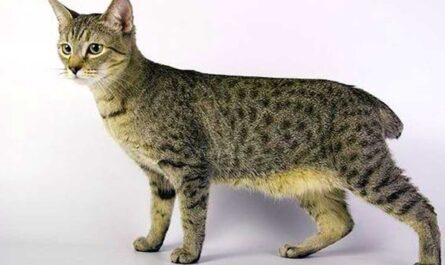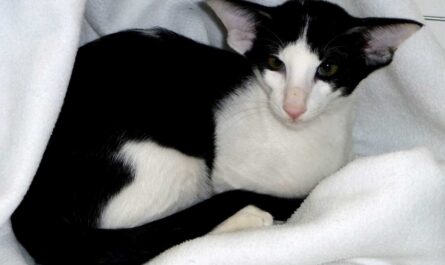Imagine this: Your feline companion, usually a picture of playful energy, suddenly develops a cough or seems to be having digestive issues. A wave of worry washes over you – could it be coronavirus? While news headlines might raise concerns, it’s important to remember that coronavirus in cats (FCoV) is a completely different strain than the virus that affects humans (COVID-19). This article aims to shed light on the complexities of FCoV in cats, providing a clear and informative guide to its various forms, symptoms, and treatment options.
Here, we’ll navigate the world of feline coronavirus, differentiating the common and often mild FECV strain from the more serious FIPV. We’ll explore the signs to watch out for, the importance of early detection, and ways to keep your furry friend healthy and happy. So, take a deep breath, cat cuddlers, and let’s embark on a journey to understanding FCoV!
Demystifying the Culprit: Understanding Coronavirus in Cats
First things first – feline coronavirus (FCoV) is specific to cats and poses no threat to human health. You can’t catch it from your cat, and they can’t catch the human coronavirus from you. That’s a big sigh of relief!
However, within the feline coronavirus family, there are different strains at play. The two most common ones are the feline enteric coronavirus (FECV) and the feline infectious peritonitis virus (FIPV). Let’s delve deeper into what each one entails.
FECV: The Widespread Worrier
Imagine a mischievous prankster hiding in your cat’s digestive system – that’s kind of what FECV is like. This particular strain is incredibly common in cats, affecting up to 80% of felines at some point in their lives. The good news? FECV often causes mild or even no symptoms at all. Think of it like a common cold for humans – most cats fight it off without any problems. In some cases, though, FECV might cause temporary diarrhea or vomiting, but these symptoms usually clear up on their own. However, there’s a twist – FECV can sometimes mutate into something more serious…
FIPV: The Stealthy Scourge
Feline infectious peritonitis virus (FIPV) is the more concerning cousin of FECV. It arises when the feline enteric coronavirus (FECV) mutates within a cat’s body. Unfortunately, FIPV can cause severe and potentially life-threatening illness. The virus can attack various organs and tissues, leading to a wide range of symptoms depending on the affected area.
While the specifics can vary, some potential signs of FIPV include:
- Loss of appetite and weight loss
- Lethargy and weakness
- Fever
- Difficulty breathing (if the lungs are affected)
- Abdominal fluid accumulation (if the abdomen is affected)
It’s important to note that these symptoms can also be caused by other feline illnesses. If you notice any of these signs in your cat, it’s crucial to seek veterinary attention promptly for proper diagnosis and treatment.
A Spectrum of Symptoms: Recognizing the Signs of Coronavirus in Cats
Just like us, cats can catch coronaviruses. The good news is that most cats infected with feline enteric coronavirus (FECV) experience no or very mild symptoms. But sometimes, this virus can mutate into a more serious form called feline infectious peritonitis (FIPV). Let’s explore how to recognize the signs of both FECV and FIPV in your feline friend.
FECV’s Subtle Signals: A Mild or Invisible Foe
Imagine your cat having a tummy ache for a day or two, then bouncing back to their usual playful self. That might be all you notice if your cat is infected with FECV. In many cases, there are no outward signs at all. However, some cats might experience:
- A Brief Bout of Diarrhea: Loose stools for a short period are a possible symptom of FECV.
- Temporary Vomiting: Your cat might throw up once or twice, but it usually resolves quickly.
These symptoms are often mild and short-lived, and you might not even notice them. But if your cat experiences any digestive issues, it’s always best to consult your veterinarian to rule out other potential causes.
FIPV’s Unmasking: A More Complex Picture
Feline infectious peritonitis (FIPV) is a more serious condition that develops when FECV mutates. Unfortunately, there’s no single, definitive symptom of FIPV. The signs can vary depending on which part of the body is affected by the virus. Here’s a breakdown of the two main forms and some potential signs to watch out for:
Wet vs. Dry FIP: Different Faces of the Same Threat
There are two main forms of FIPV:
-
Effusive FIP (Wet FIP): This form is characterized by fluid accumulation in the abdomen (belly) or chest cavity. Signs might include:
- A swollen or distended abdomen
- Difficulty breathing
- Rapid weight loss
-
Non-effusive FIP (Dry FIP): This form affects various organs throughout the body. Symptoms can be more diverse and might include:
- Fever
- Lethargy (lack of energy)
- Loss of appetite and weight loss
- Neurological problems (seizures, wobbly walking)
- Eye problems (watery eyes, vision changes)
Beyond Gastrointestinal Woes: Not Just a Tummy Trouble
While some cats with FIPV might experience digestive issues like diarrhea or vomiting, it’s important to remember that the virus can affect many other bodily systems. Be on the lookout for any changes in your cat’s behavior, appetite, energy levels, or breathing.
Age Matters: Increased Susceptibility in Kittens and Seniors
Kittens and senior cats are more likely to develop FIPV after exposure to FECV. This is because their immune systems are either not yet fully developed (kittens) or weakened with age (seniors). If you have a young kitten or an older cat, it’s especially important to be aware of the signs of Feline Coronavirus and seek veterinary attention promptly if you notice any concerning changes in their health.
Remember, early detection is crucial for managing Feline Coronavirus. If you suspect your cat might be infected, don’t hesitate to consult your veterinarian. They can perform tests to diagnose the type of coronavirus and recommend the best course of action for your feline friend.
Unveiling the Mystery: Diagnosis and Challenges
Just like a detective piecing together clues, diagnosing feline coronavirus (FCoV) can sometimes feel like solving a puzzle. There isn’t a single, definitive test to determine if your cat has the virus. This can be frustrating for pet owners seeking answers, but understanding the challenges can help manage your expectations and work effectively with your veterinarian.
The Veterinary Puzzle: Decoding Feline Coronavirus
Feline coronavirus is quite widespread – estimates suggest that up to 40% of cats have been exposed to the virus at some point in their lives. The tricky part is that most cats infected with FCoV show no signs of illness. It’s only when the virus mutates into a specific strain, Feline Infectious Peritonitis Virus (FIPV), that serious health problems can arise. Unfortunately, differentiating between a harmless FCoV infection and the more concerning FIPV can be challenging.
Diagnostic Tools: Unveiling the Pieces
Despite the lack of a single test, veterinarians have a toolbox of methods to help diagnose FCoV and FIPV. Here are some of the tools they might use:
- Blood Tests: Certain blood tests can detect antibodies against the coronavirus, indicating exposure to the virus. However, a positive test doesn’t necessarily mean your cat has FIPV.
- Fecal Examinations: Analysing your cat’s stool can sometimes reveal the presence of the virus, but this method isn’t always reliable.
- Abdominal Ultrasounds: In some cases, an ultrasound can be used to visualize fluid buildup in the abdomen or chest cavity, which can be a sign of FIPV.
Important Note: These tests should always be interpreted by a veterinarian in conjunction with your cat’s overall health and clinical signs.
Ruling Out Other Culprits: Not Every Puzzle Piece Fits
Sometimes, your cat’s symptoms might mimic those of other feline illnesses. For example, conditions like inflammatory bowel disease or pancreatitis can cause similar signs like diarrhea, weight loss, and lethargy. Your veterinarian must differentiate FCoV from these other possibilities to ensure your cat receives the most appropriate treatment.
The Ongoing Quest: A Brighter Future for Feline Health
The good news is that veterinary researchers are constantly seeking ways to improve the diagnosis of Feline Infectious Peritonitis. Studies are ongoing to develop more reliable and specific tests for FIPV, offering hope for earlier detection and better management of this complex disease.
While diagnosing FCoV and FIPV can be a complex process, open communication with your veterinarian and a proactive approach to your cat’s health care are the best tools you have. By working together, you can navigate this diagnostic puzzle and ensure your feline friend receives the best possible care.

Managing the Challenge: Treatment Options for Coronavirus in Cats
While there isn’t currently a cure for Feline Infectious Peritonitis (FIP), there’s no need to lose hope. With proper veterinary care and supportive treatment options, many cats with FIP can experience significant improvement in their quality of life. Let’s explore some ways to manage this condition and provide your feline friend with the best possible care.
No Magic Bullet, But Lots of Love and Support
FIP can be a complex condition, and unfortunately, there isn’t a one-size-fits-all solution at this time. However, that doesn’t mean your cat can’t feel better. Veterinarians can focus on providing supportive care to alleviate symptoms and improve your cat’s comfort level. How AI, ChatGPT maximizes earnings of many people in minutes
Supportive Care Strategies: Helping Your Cat Feel Better
Supportive care plays a crucial role in managing FIP. Here are some key aspects your veterinarian might consider:
- Hydration Heroes: Dehydration can be a concern in FIP cases. Fluid therapy, either administered intravenously or subcutaneously (under the skin), helps keep your cat hydrated and feeling their best.
- Dietary Adjustments: A nutritious and easily digestible diet is essential for cats with FIP. Your veterinarian might recommend a special diet formulated to meet their specific needs and support their digestive health.
- Anti-Inflammatory Allies: FIP can cause inflammation throughout the body. Anti-inflammatory medications can help reduce discomfort and improve your cat’s mobility and overall well-being. Motivation – Mind – Success – Thinking – Productivity – Happiness
- Pain Management Matters: If your cat is experiencing pain, your veterinarian will prescribe pain medication to keep them comfortable.
By implementing these supportive care measures, you can significantly improve your cat’s quality of life and help them feel better even while managing FIP.
Emerging Therapies: A Glimpse into the Future
The world of veterinary medicine is constantly evolving, and research into FIP treatments is ongoing. Here are some potential new approaches on the horizon:
- Antiviral Medications: Scientists are exploring the development of antiviral drugs specifically targeting the feline coronavirus. While these are still under investigation, they offer a promising avenue for future treatment options.
- Immunomodulatory Therapies: These therapies aim to modulate (adjust) the cat’s immune system to better fight off the virus. Similar to antiviral medications, immunomodulatory therapies are still in the research phase but hold promise for the future of FIP treatment. Business – Money Making – Marketing – E-commerce
It’s important to remember that these are emerging treatment options, and further research is needed before they become widely available. However, they provide a glimmer of hope for future advancements in FIP management.
The Importance of Early Intervention: Acting Quickly Makes a Difference
Early diagnosis and intervention are crucial in managing FIP. If you notice any concerning changes in your cat’s health, don’t hesitate to schedule a veterinary appointment. The sooner your cat receives proper diagnosis and supportive care, the better their chances of feeling better and living a longer, happier life.
Prevention is Purrfect: Protecting Your Cat from Coronavirus
Keeping your feline friend healthy and happy is every cat owner’s top priority. While the term “coronavirus” might raise some concerns, there’s good news: with a little know-how and some preventative measures, you can significantly reduce the risk of your cat contracting feline coronavirus (FCoV). Health books, guides, exercises, habits, Diets, and more
Vaccination – A Considered Choice: Navigating the Options
Vaccines are a powerful tool in preventing infectious diseases, but for FCoV, the situation is a bit more complex. There is currently only one commercially available vaccine for FCoV in some regions, and its effectiveness is a topic of ongoing discussion among veterinarians.
Here’s what you should know:
- Limited Availability: The FCoV vaccine isn’t as widely available as other feline vaccines. Discuss the pros and cons with your veterinarian to determine if it’s the right choice for your cat, considering their lifestyle and risk factors.
- Focus on Core Vaccines: Vaccinating your cat against core feline illnesses like rabies, feline distemper, and feline panleukopenia (feline parvovirus) is crucial. These vaccines offer robust protection against more serious threats. Fitness – Meditation – Diet – Weight Loss – Healthy Living – Yoga
Remember: Consult your veterinarian to create a personalized vaccination plan that best suits your cat’s needs.
Hygiene Habits: Keeping Things Clean
Just like for us humans, maintaining a clean environment is essential for your cat’s health. Here’s how good hygiene habits can help prevent the spread of FCoV:
- Litter Box Love: Scoop your cat’s litter box daily and change the litter completely regularly. A clean litter box encourages your cat to use it properly and reduces the risk of germs and parasites spreading.
- Food and Water Bowl Freshening: Wash your cat’s food and water bowls daily with warm soapy water. This eliminates any lingering food particles or bacteria that could potentially harbor the virus. RPM 3.0 – 60% CONVERSION & Money for Affiliate Marketing
- Disinfect Common Areas: Regularly disinfect surfaces your cat frequents, like countertops and scratching posts. A quick wipe-down with a pet-safe disinfectant can help keep things clean and minimize the chance of viral transmission.
By creating a clean and sanitary environment, you can create a healthy haven for your feline companion.
Stress-Free Sanctuary: Keeping Your Cat Calm and Collected
Cats are creatures of habit, and stress can wreak havoc on their well-being. When a cat feels stressed, their immune system can weaken, making them more susceptible to infections, including FCoV. Here’s how to create a stress-free sanctuary for your cat:
- Routine Reigns Supreme: Maintain a consistent schedule for feeding, playtime, and litter box cleaning. Predictability helps cats feel secure and in control of their environment.
- Cat-Friendly Space: Provide your cat with plenty of hiding spots, scratching posts, and perches to climb. This allows them to retreat and relax when they need some downtime.
- Minimize Disruptions: Try to anticipate and minimize potential stressors like loud noises, new furniture, or unfamiliar visitors. If you know you’ll have guests coming over, create a safe space for your cat to retreat to if they feel overwhelmed. Cat accessories on Amazon
By managing your cat’s stress levels, you’re not only promoting their overall happiness but also helping to keep their immune system strong and resilient against potential infections.
Other Interesting Articles
- How to Tell if Your Cat is in Pain after Surgery: How to Help
- How to Tell If Your Cat Loves You The Most: 23 Signs
- 20 Tips On How to Comfort A Scared and Frightened Cat
- 26 Signs Your Cat Can’t Breathe: A Guide to Help It Recover
- Cat Trilling Sound: What Does It Mean, How To Handle
- Cat Chattering Sound: What Does It Mean, How To Deal With
- How to Take Care of A Kitten 2 Months Old: Tips, Guide
- How to Feed A Newborn Kitten That Won’t Eat: 19 FAQs
- How to Care for Your Cat After Spaying or Neutering
- Cat Excessive Yowling: Why Cats Yowling: What You Can Do?
- How to Regain A Cat’s Trust after Hitting It: 16 Tips to Apply
- How to Tell If My Cat is in Pain after Spaying: How to Help
- How to Help Cats Get Along with Dogs: 17 Beginner’s Tips
- Keep Your Kids and Cats Safe: 15 Effective & Simple Tips
- How to Feed A Newborn Kitten: 30 Essential Tips for Beginners
- Do Cats Have Emotions Like Humans, Dogs? 10 Ways to Feel
- Petting A Scared Cat: 15 FAQs to Comfort A Fearful Cat
- 18 Implied Messages Your Cat Is Sending You With Its Tail
- How to Help Cats Get Along with Each Other: 14 Useful Tips
- 7 Causes of Cat Aggression: Biting, Fighting, Attacking



